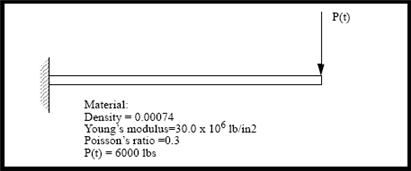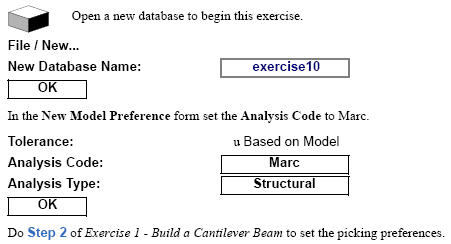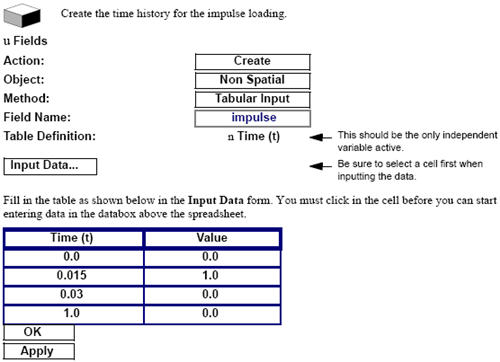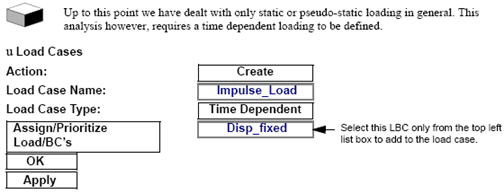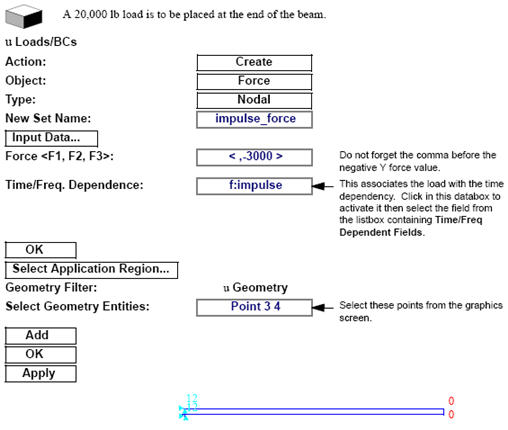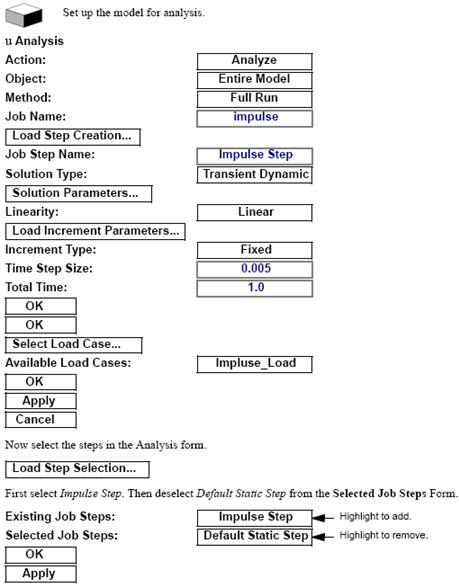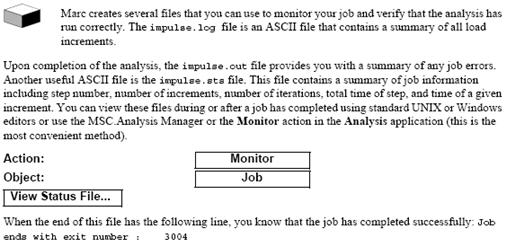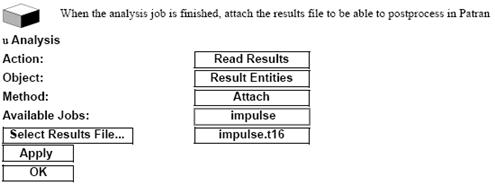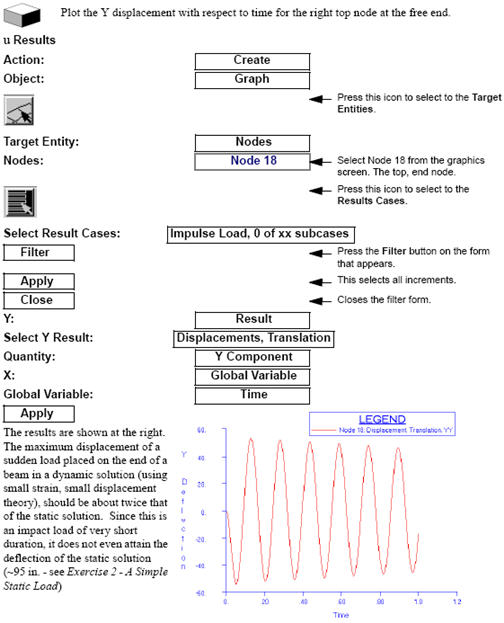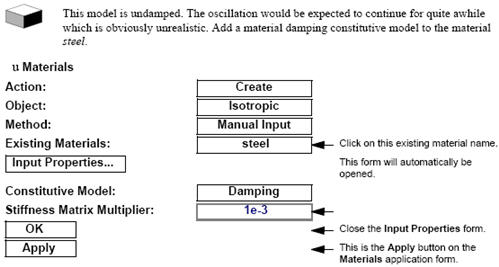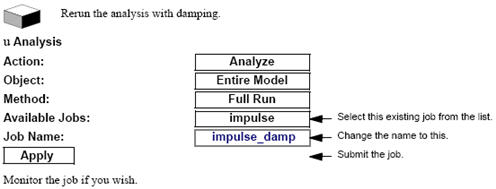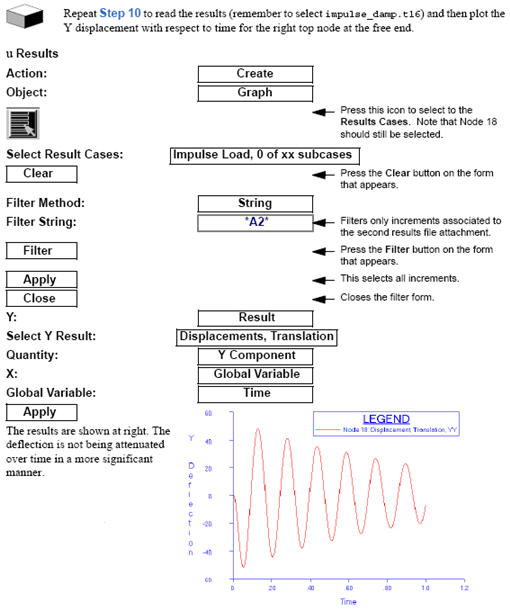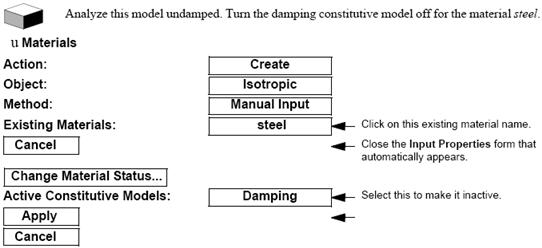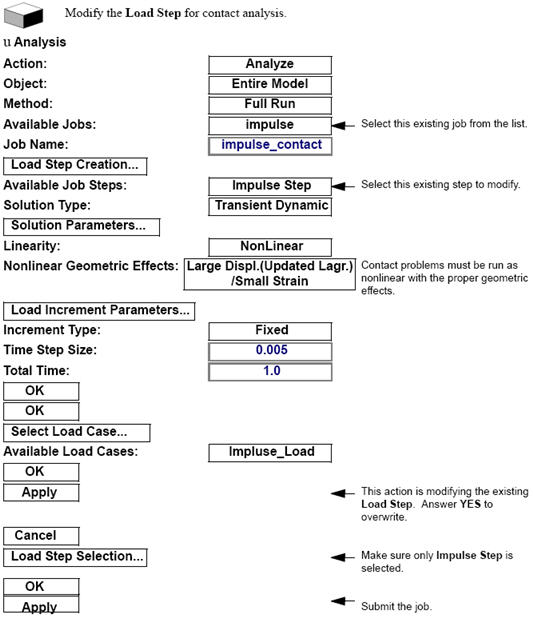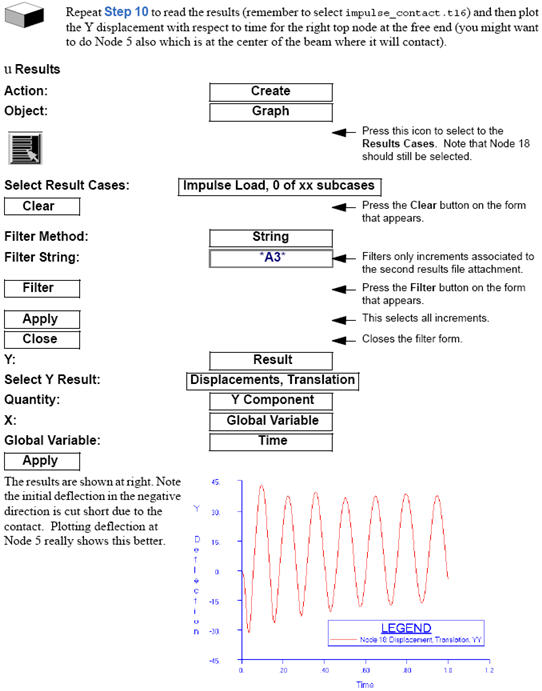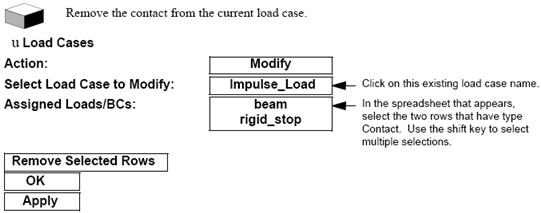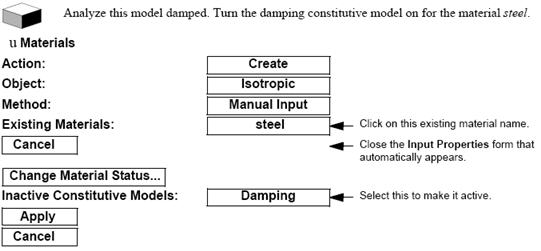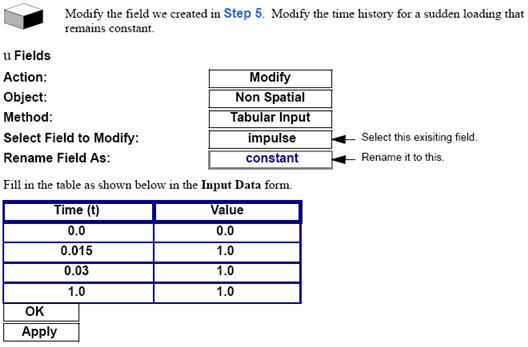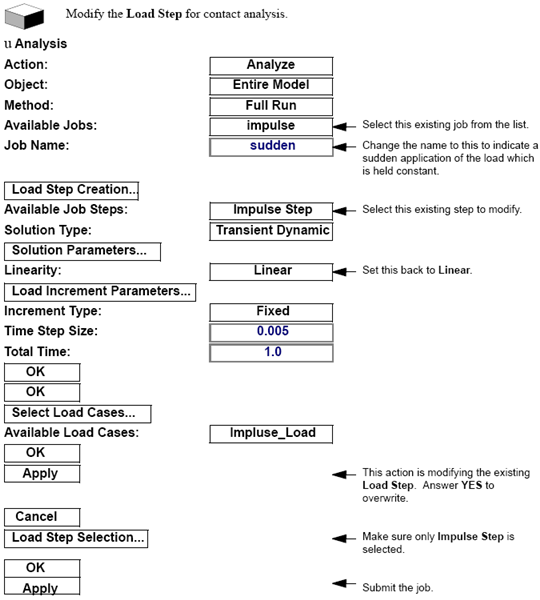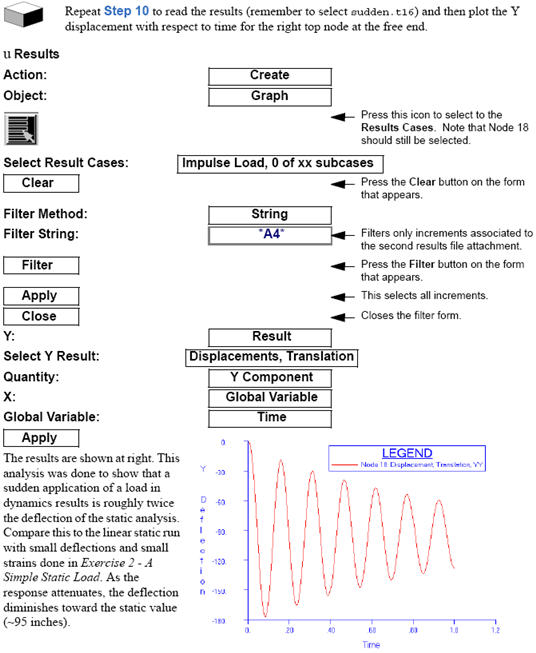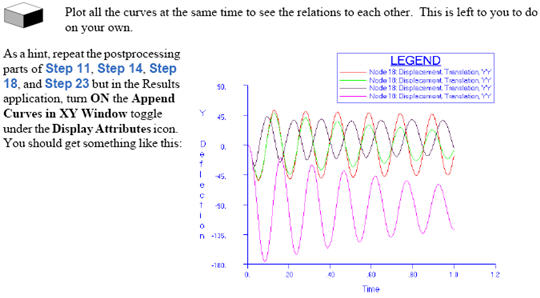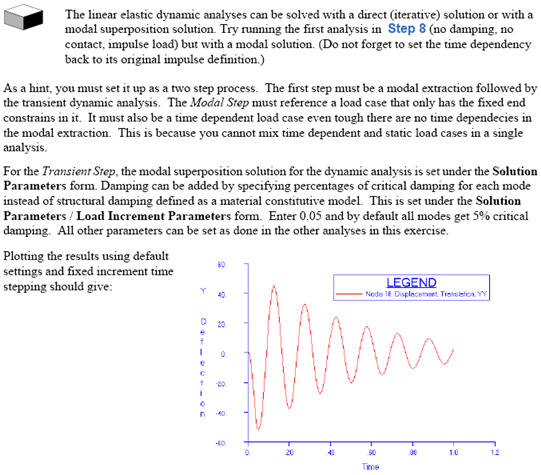XXXXXXXXXXXXXXXXXXXXXXXXXXXXXXXXXXXXXXXXXXXXXXXXXXXXXXXXXXXXXXXXXXXXXXXXXXXXXXXXXXXXXXXXXXXXXXXXXXXXXXXXXXXXXXXXXXXXXXXXXXXXXXXXXXXXXXXXXXXXXXXXXXXXXXXX''"> Exercise 10 - Transient Dynamic Analysis
In this exercise, you will apply an impulse load on the free end of a cantilever beam. The loading will be a force defined as a function of time; therefore you will need to define a nonspatial field. You will run the analysis as a direct transient analysis, first without damping, then with damping, and finally, if you want, with a contact interference.
Step 1: Do Exercise 1 - Build a Cantilever Beam
Step 2: Open a New Database.
Step 3: Import the Old Database.
Step 4: Post Only the Beam.
Step 5: Create the Time History.
Step 6: Create a Time Dependent Load Case
Step 7: Create the Dynamic Load.
Note: | The displayed value of the load will be zero. This is because the force value is multiplied by the first value in the field, which is zero. |
Step 8: Set Up the Model for Analysis
Step 9: Monitor the Analysis
Step 10: Read the Results.
Step 11: Plot the Tip Deflection with Time
Step 12: What About Damping?
Step 13: Rerun the Analysis with Damping.
Step 14: Read and Plot Results with Damping
Note: | To remove the graph, press the Reset Graphics icon (appears as a broom).  |
Step 15: Create a Contact Interference.
Step 16: Deactivate the Damping.
Step 17: Set Up the Model and Submit the Analysis.
Step 18: Read and Plot the Results with Contact.
Step 19: Remove the Contact from the Problem.
Step 20: Reactivate the Damping.
Step 21: Modify the Time Dependent Field.
Note: | Although we modified the field and changed its name, it is still associated to the 6,000 lb load applied at the tip of the beam. We have just modified its time dependent behavior. |
Step 22: Set Up the Model and Submit the Analysis.
Step 23: Read and Plot the Results with Contact.
Note: | Again these problem are for illustration purposes and to bring out certain point in using the software. This problem is not realistic in that there are obvious nonlinear conditions that should be taken into account (large displacements and possibly large strains with plasticity and work hardening). |
Step 24: Final Challenge
One More Final Challenge
Step 25: Closing/Quitting Patran
